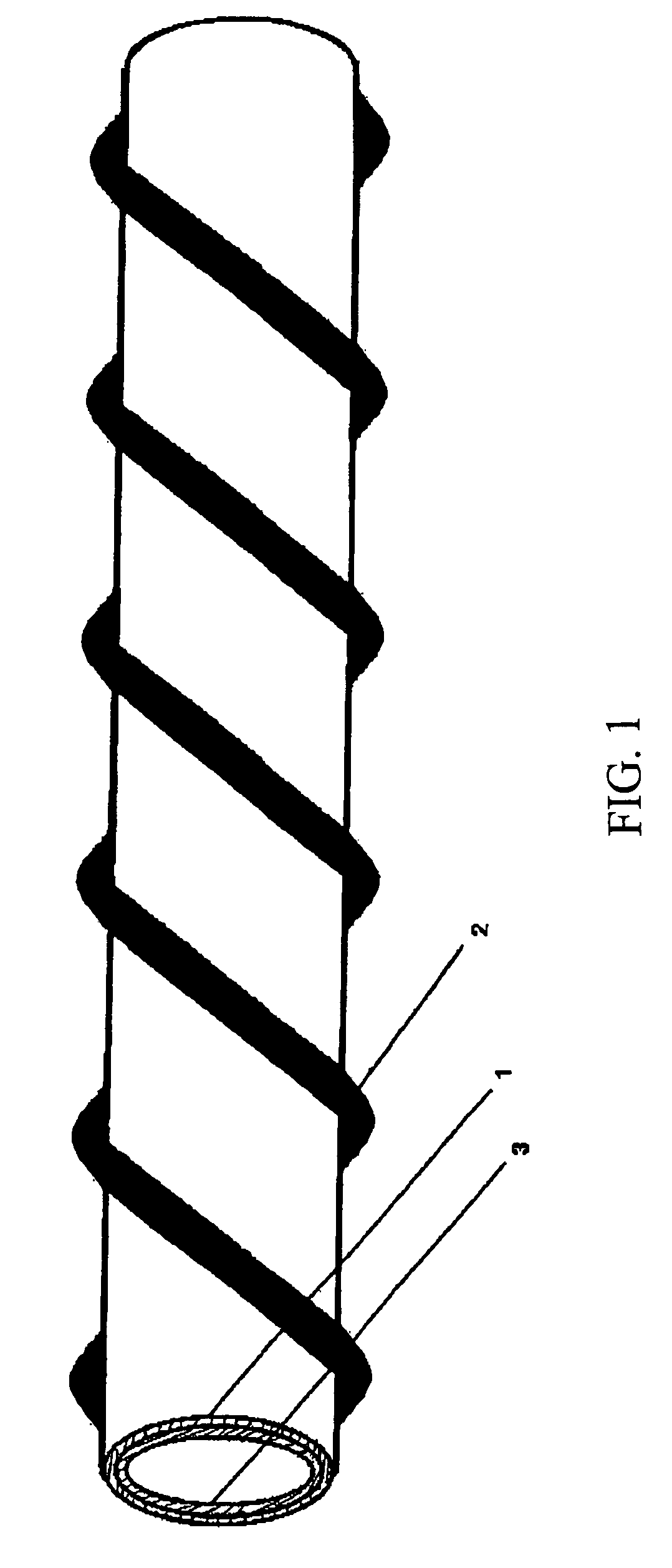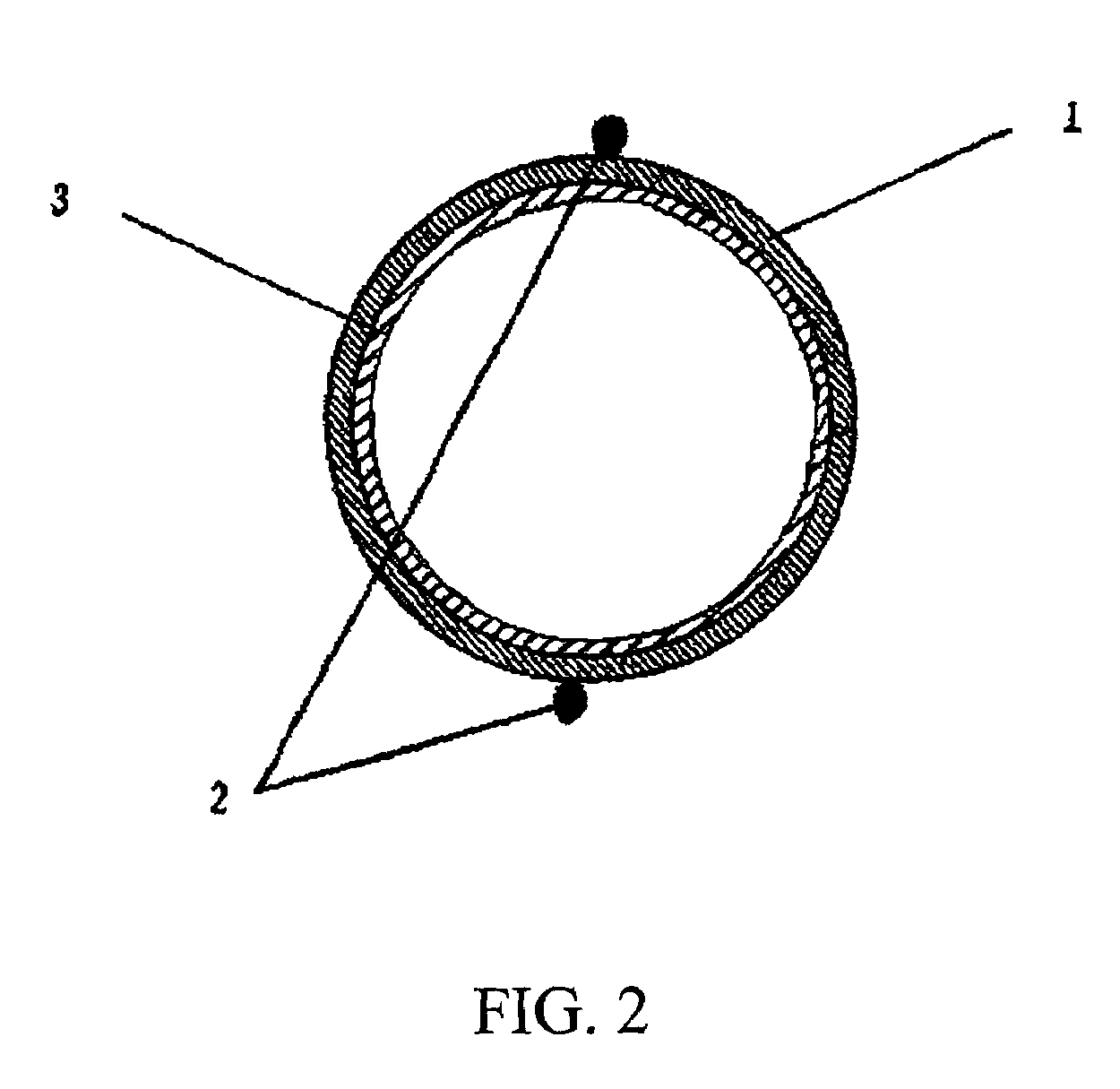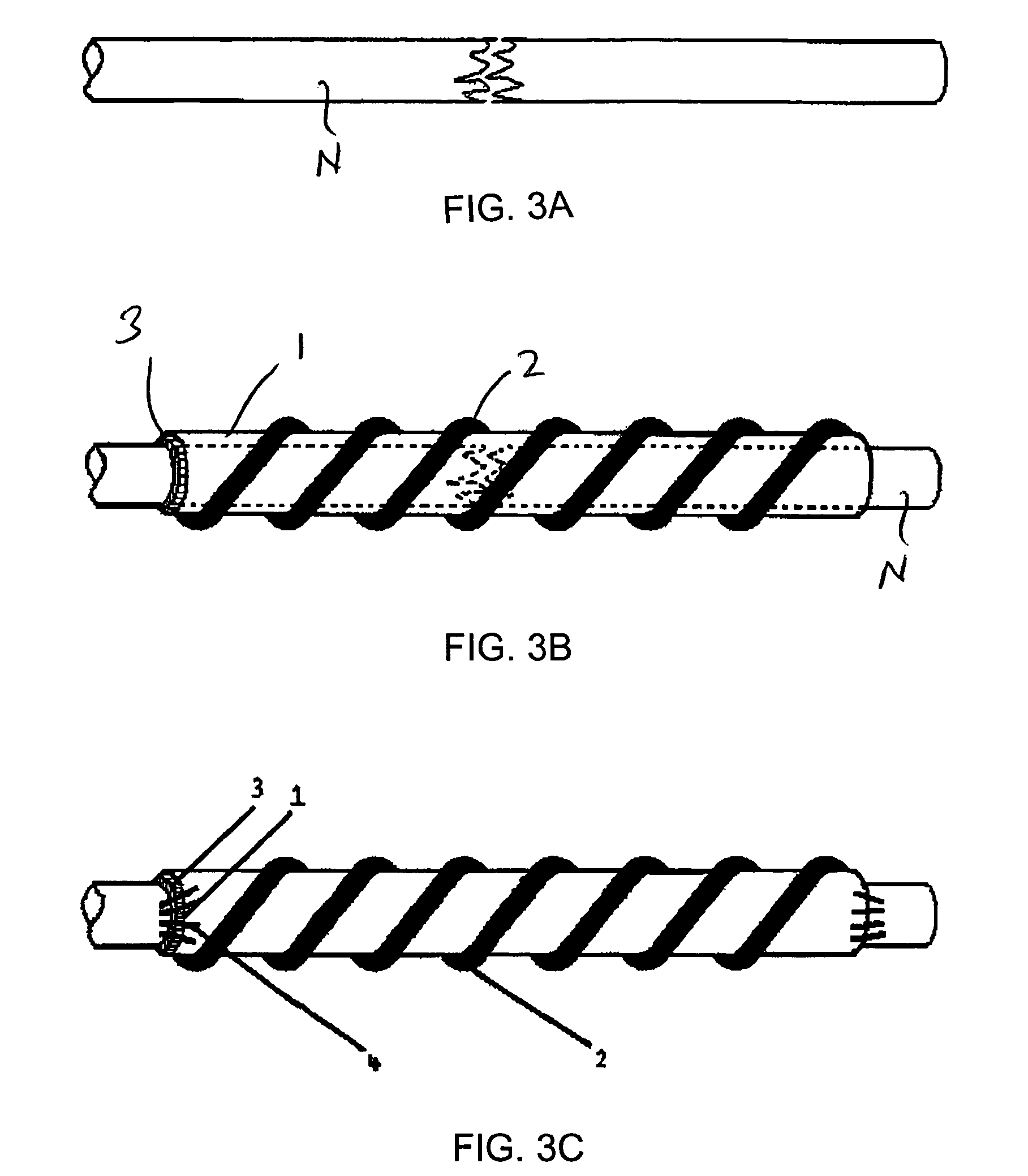Biological artificial nerve guide and method of making
a bio-inspired nerve and guide technology, applied in the field of medical prosthesis, can solve the problems of fragile nerve tissues, slow speed, and often inability of natural regeneration and repair to reconnect nerves, and achieve good biocompatibility
- Summary
- Abstract
- Description
- Claims
- Application Information
AI Technical Summary
Benefits of technology
Problems solved by technology
Method used
Image
Examples
example 1
[0054]Referring to FIGS. 1 and 2, fresh porcine membrane materials such as pericardium, omentum, pleura, diaphragm or small intestine membrane are excised, and the fatty materials and loose fibrous tissues are carefully removed, to trim the tough membrane to be as thin as possible. Then, the membrane is washed, cleaned and rinsed with water, and then the fats and fat-soluble impurities in the membrane materials are extracted using an organic solvent. The membrane will be used for the guide body 1 and the spiral support 2 shown in FIGS. 1-2.
[0055]Next, the solvent is removed and crosslinking fixation is conducted using a carbocyclic oxide.
[0056]After washing and freeze-drying, reaction with acetic anhydride or butyric anhydride is conducted to block the antigen groups, and the membrane is treated with Tris buffer solution of guanidine hydrochloride to alter the specific conformations of the antigens.
[0057]Polyglycolic acid prepolymer is then grafted on the collagen molecules to stren...
PUM
| Property | Measurement | Unit |
|---|---|---|
| water-soluble | aaaaa | aaaaa |
| regenerating power | aaaaa | aaaaa |
| acidity | aaaaa | aaaaa |
Abstract
Description
Claims
Application Information
 Login to View More
Login to View More - R&D
- Intellectual Property
- Life Sciences
- Materials
- Tech Scout
- Unparalleled Data Quality
- Higher Quality Content
- 60% Fewer Hallucinations
Browse by: Latest US Patents, China's latest patents, Technical Efficacy Thesaurus, Application Domain, Technology Topic, Popular Technical Reports.
© 2025 PatSnap. All rights reserved.Legal|Privacy policy|Modern Slavery Act Transparency Statement|Sitemap|About US| Contact US: help@patsnap.com



